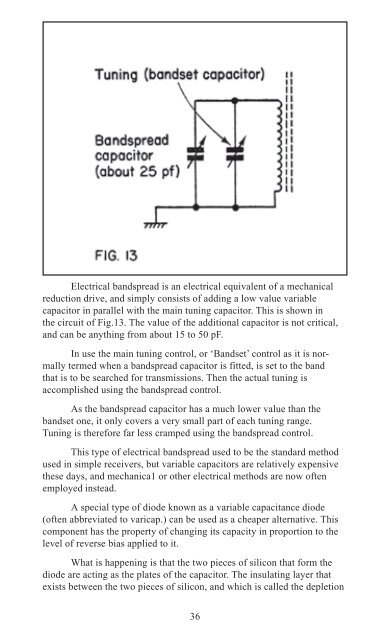Solid State Shortwave Receivers For Beginners - The Listeners Guide
Solid State Shortwave Receivers For Beginners - The Listeners Guide
Solid State Shortwave Receivers For Beginners - The Listeners Guide
Create successful ePaper yourself
Turn your PDF publications into a flip-book with our unique Google optimized e-Paper software.
Electrical bandspread is an electrical equivalent of a mechanical<br />
reduction drive, and simply consists of adding a low value variable<br />
capacitor in parallel with the main tuning capacitor. This is shown in<br />
the circuit of Fig.13. <strong>The</strong> value of the additional capacitor is not critical,<br />
and can be anything from about 15 to 50 pF.<br />
In use the main tuning control, or ‘Bandset’ control as it is normally<br />
termed when a bandspread capacitor is fitted, is set to the band<br />
that is to be searched for transmissions. <strong>The</strong>n the actual tuning is<br />
accomplished using the bandspread control.<br />
As the bandspread capacitor has a much lower value than the<br />
bandset one, it only covers a very small part of each tuning range.<br />
Tuning is therefore far less cramped using the bandspread control.<br />
This type of electrical bandspread used to be the standard method<br />
used in simple receivers, but variable capacitors are relatively expensive<br />
these days, and mechanica1 or other electrical methods are now often<br />
employed instead.<br />
A special type of diode known as a variable capacitance diode<br />
(often abbreviated to varicap.) can be used as a cheaper alternative. This<br />
component has the property of changing its capacity in proportion to the<br />
level of reverse bias applied to it.<br />
What is happening is that the two pieces of silicon that form the<br />
diode are acting as the plates of the capacitor. <strong>The</strong> insulating layer that<br />
exists between the two pieces of silicon, and which is called the depletion<br />
36

















